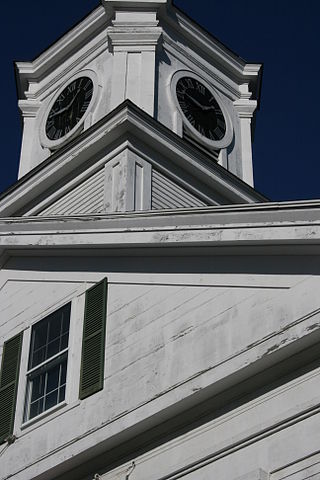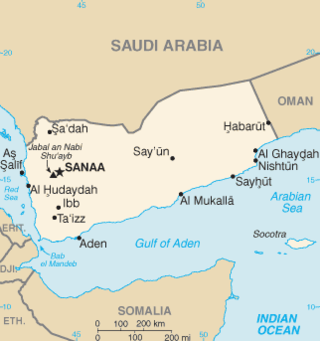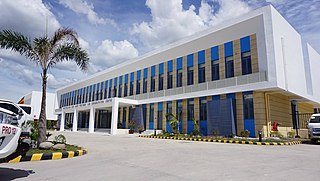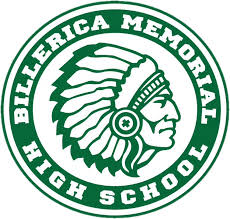
A school uniform is a uniform worn by students primarily for a school or otherwise an educational institution. They are common in primary and secondary schools in various countries and are generally widespread in Africa, Asia, Oceania, and much of the Americas. But are not common in the United States, Canada, and most countries in continental Europe.

A boarding school is a school where pupils live within premises while being given formal instruction. The word "boarding" is used in the sense of "room and board", i.e. lodging and meals. They have existed for many centuries, and now extend across many countries. Their functioning, codes of conduct, and ethos vary greatly. Children in boarding schools study and live during the school year with their fellow students and possibly teachers or administrators. Some boarding schools also have day students who attend the institution during the day and return home in the evenings.

Barre is a town in Worcester County, Massachusetts, United States. The population was 5,530 at the 2020 census.

Mixed-sex education, also known as mixed-gender education, co-education, or coeducation, is a system of education where males and females are educated together. Whereas single-sex education was more common up to the 19th century, mixed-sex education has since become standard in many cultures, particularly in western countries. Single-sex education remains prevalent in many Muslim countries. The relative merits of both systems have been the subject of debate.

Sex segregation, sex separation, sex partition,gender segregation,gender separation, or gender partition is the physical, legal, or cultural separation of people according to their gender or biological sex at any age. Sex segregation can simply refer to the physical and spatial separation by sex without any connotation of illegal discrimination. In other circumstances, sex segregation can be controversial. Depending on the circumstances, it can be a violation of capabilities and human rights and can create economic inefficiencies; on the other hand, some supporters argue that it is central to certain religious laws and social and cultural histories and traditions.
Achievement gaps in the United States are observed, persistent disparities in measures of educational performance among subgroups of U.S. students, especially groups defined by socioeconomic status (SES), race/ethnicity and gender. The achievement gap can be observed through a variety of measures, including standardized test scores, grade point average, dropout rates, college enrollment, and college completion rates. The gap in achievement between lower income students and higher income students exists in all nations and it has been studied extensively in the U.S. and other countries, including the U.K. Various other gaps between groups exist around the globe as well.

Single-sex education, also known as single-gender education and gender-isolated education, is the practice of conducting education with male and female students attending separate classes, perhaps in separate buildings or schools. The practice of single-sex schooling was common before the 20th century, particularly in secondary and higher education.
Education in Kenya refers to the institutionalised education system in Kenya, whereby pupils and students are taught in specific locations, following a particular curriculum. The institutionalised system differs from traditional education which had been in existence long before missionarisation and colonisation, and was administered according to the various indigenous groups' cultures and customs.
Sexual harassment in education in the United States is an unwelcome behavior of a sexual nature that interferes with an American student's ability to learn, study, work or participate in school activities. It is common in middle and high schools in the United States. Sexual or gender harassment is a form of discrimination under Title IX of the Education Amendments of 1972. Sexual harassment involves a range of behavior from mild annoyances to unwanted touching and, in extreme cases, rape or other sexual assault.

Yemen ranked 150 out of 177 in the 2006 Human Development Index and 121 out of 140 countries in the Gender Development Index (2006). In 2005, 81 percent of Yemen's school-age population was enrolled in primary school; enrollment of the female population was 74 percent. Then in 2005, about 46 percent of the school-age population was enrolled in secondary school, including only 30 percent of eligible females. The country is still struggling to provide the requisite infrastructure. School facilities and educational materials are of poor quality, classrooms are too few in number, and the teaching faculty is inadequate.

Education in Ethiopia was dominated by the Ethiopian Orthodox Church for many centuries until secular education was adopted in the early 1900s. Prior to 1974, Ethiopia had an estimated literacy rate below 50% and compared poorly with the rest of even Africa in the provision of schools and universities. After the Ethiopian Revolution, emphasis was placed on increasing literacy in rural areas. Practical subjects were stressed, as was the teaching of socialism. By 2015, the literacy rate had increased to 49.1%, still poor compared to most of the rest of Africa.

Abominable Firebug is a book about survival as one of America's throwaway children.

A residential treatment center (RTC), sometimes called a rehab, is a live-in health care facility providing therapy for substance use disorders, mental illness, or other behavioral problems. Residential treatment may be considered the "last-ditch" approach to treating abnormal psychology or psychopathology.

Billerica Memorial High School (BMHS), formerly Howe High School, is a public secondary school in the town of Billerica, Massachusetts. It is the only high school under the purview of the Billerica Public Schools district, and serves approximately 1,600 students between grades 8 and 12. The school is supervised by a district superintendent who reports to an elected school committee for the town. As of January 2023, Thomas Murphy, an alumnus of BMHS, is the school's principal. The administration consists of assistant principals responsible for a specific grade-year. In athletics, Billerica's arch-rival is Chelmsford High School. The colors of BMHS are green and white, and the school's emblem is the Indian Head.

Education in Chad is challenging due to the nation's dispersed population and a certain degree of reluctance on the part of parents to send their children to school. Although attendance is compulsory, only 68% of boys continue their education past primary school, and over half of the population is illiterate. Higher education is provided at the University of N'Djamena.

Sex differences in education are a type of sex discrimination in the education system affecting both men and women during and after their educational experiences. Men are more likely to be literate on a global average, although higher literacy scores for women are prevalent in many countries. Women are more likely to achieve a tertiary education degree compared to men of the same age. Men tended to receive more education than women in the past, but the gender gap in education has reversed in recent decades in most Western countries and many non-Western countries.

In the Dominican Republic, education is free and compulsory at the elementary level, and free but non-mandatory at the secondary level. It is divided into four stages:
The debate on the causes of clerical child abuse is a major aspect of the academic literature surrounding Catholic sex abuse cases.
Institutional abuse is the maltreatment of a person from a system of power. This can range from acts similar to home-based child abuse, such as neglect, physical and sexual abuse, and hunger, to the effects of assistance programs working below acceptable service standards, or relying on harsh or unfair ways to modify behavior. Institutional abuse occurs within emergency care facilities such as foster homes, group homes, kinship care homes, and pre-adoptive homes. Children who are placed in this type of out of home care are typically in the custody of the state. The maltreatment is usually caused by an employee of the facility.
Sexual abuse in primary and secondary schools also referred to as molestation, is an abusive sexual behavior by one person upon another. It is often perpetrated using force or by taking advantage of another especially in people who are underaged and concerns child sexual abuse, occurring in educational institutions from kindergarten through secondary education.
















